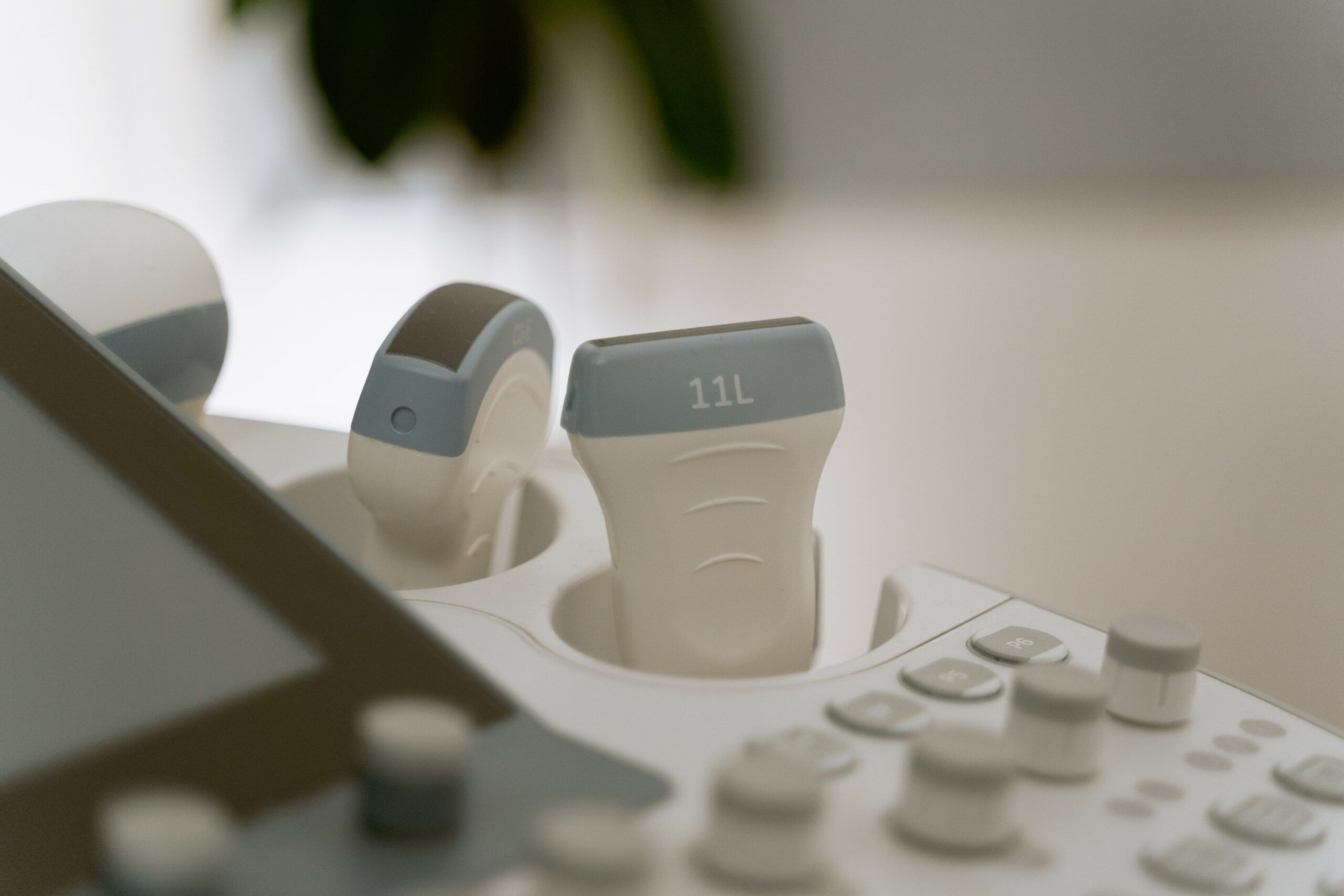A nuchal translucency test is an ultrasound performed in the first trimester of pregnancy. This optional ‘12-week scan’ helps determine your baby’s risk of congenital conditions such as Down’s syndrome. It is highly accurate at detecting abnormal genetic conditions when combined with first-trimester blood tests. It is a quick, painless, and safe procedure.
Nuchal translucency measures the amount of fluid behind your baby’s neck (nuchal fold) in the first trimester of pregnancy.
All babies have fluid behind their necks, but more fluid tends to build up at the base of a baby’s neck when they have chromosomal or genetic conditions. By measuring the amount of fluid your doctor can calculate your baby’s chances of having a chromosomal or genetic condition such as Down’s syndrome, Patau syndrome or Edwards syndrome. Whilst having a NT scan, your baby’s basic anatomical structures will also be screened for any abnormalities.
It’s important to note that a NT scan alone cannot diagnose a condition. A NT scan can only indicate the likelihood of your baby having a genetic abnormality. If the results of your ultrasound scan shows that NT is increased, your doctor will discuss additional testing options, including chorionic villus sampling (CVS) or amniocentesis.
What Conditions Does NT Test For?
A nuchal translucency scan is generally not done as a stand-alone test. You will be offered a ‘combined test’, which combines ultrasound and blood test results. These tests are carried out together between weeks 10 and 14 weeks of pregnancy. NT can screen for the following conditions:
- Down's syndrome (trisomy 21): Babies born with this condition have an extra copy of chromosome 21. People with Down's syndrome are more likely to have certain health conditions, such as heart problems, digestive system problems, and problems relating to their hearing and vision. People with Down’s syndrome can still lead happy and healthy lives with supportive care.
- Edwards' syndrome (trisomy 18): A baby with Edwards' syndrome has 3 copies of chromosome number 18 instead of 2. This is a rare but serious condition that causes most babies to die before or shortly after being born.
- Patau's syndrome (trisomy 18): This is a rare but serious genetic disorder caused by having an additional copy of chromosome 13. People with this condition may display physical abnormalities such as cleft palate, extra fingers or toes, abnormalities in the arms and legs or underdeveloped eyes. Most people with Patau's syndrome do not live beyond their first birthday.
- Foetal heart defects: An abnormal NT scan can indicate a foetal heart defect.
- Anatomical abnormalities: At the time of nuchal translucency, the ultrasound will also identify any anatomical anomalies or abnormalities. Your doctor or nurse may look at the foetal nasal bone during the NT scan. If no nasal bone is seen it might indicate an increased likelihood of chromosomal abnormalities.
Who Can Have A Nuchal Translucency Scan?
Any pregnant woman can have a nuchal translucency screening as long as she’s between 11 and 13 weeks pregnant. This is when your baby measures between 45-84mm from their crown (top of their head) to rump (bottom of their torso).
Occasionally, the position of the baby inside the womb will render a NT scan unsuitable. In such cases, you will usually be offered a quadruple blood test, when you are 14 to 20 weeks pregnant.
It is an optional test which can be done as part of a first-trimester screening. You should discuss the test in detail with your doctor and make sure you understand what conditions it is testing for.
How Is A Nuchal Translucency Scan Performed?
Your doctor or nurse may use either an abdominal or vaginal ultrasound for a nuchal translucency test. If they do an abdominal ultrasound, they will first spread ultrasound gel on your stomach.
The transducer (a handheld wand) is then moved over your stomach. Images of your baby will appear on a monitor and measurements of the fluid-filled space behind your baby’s neck will be measured (in millimetres).
Your doctor will not make a diagnosis solely based on the NT results. The NT results need to be interpreted in conjunction with other first-trimester blood tests.
What Do The Results Mean?
The results of your NT scan is combined with findings from all your other first-trimester screenings to calculate your baby’s overall risk of a congenital condition. These screenings typically include blood tests to test for congenital abnormalities as well as factors such as your age. Your combined results will be in the form of a mathematical risk.
More than 95% of screening tests will deliver a lower-chance result. This result shows that the chance of having a baby with a congenital condition is lower than 1 in 150. Although this result does not completely rule out the chance of your baby having an abnormality, it does show a very low risk. A higher-chance result indicates that your baby has a higher than 1 in 150 chance of having a birth defect.
If you receive a higher-chance result your doctor may suggest having additional tests such as chorionic villus sampling (CVS) or amniocentesis to diagnose the condition. A CVS test requires taking a tissue sample from your placenta and testing it for genetic conditions. Amniocentesis takes amniotic fluid from around your baby in the uterus. The fluid is tested for birth defects such as Down’s syndrome, cystic fibrosis or spina bifida.


 71–75 Shelton Street, Covent Garden, London, WC2H 9JQ
71–75 Shelton Street, Covent Garden, London, WC2H 9JQ +44 (0) 20 3376 1032
+44 (0) 20 3376 1032



